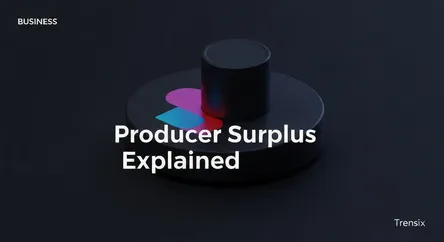Business
Producer Surplus Explained

Discover producer surplus, the economic measure of the benefit producers gain by selling at a price higher than their minimum acceptable price. Learn why.
What is it?
Producer surplus is a core concept in microeconomics measuring the benefit producers get from selling a good. It's the difference between the market price they receive and the minimum price they would have accepted. On a supply and demand chart, it's the area above the supply curve but below the market price. Essentially, it represents the extra earnings a producer makes beyond their production costs for each unit. A larger producer surplus indicates a more profitable market for sellers, encouraging them to produce more of the good.
Why is it trending?
Discussions about producer surplus are rising amid global market volatility. Factors like inflation, supply chain disruptions, and fluctuating energy costs directly impact producers' minimum prices. As governments use policies like subsidies or tariffs to manage economic instability, the effect on producer surplus becomes a key indicator of policy success. Analysts monitor this metric to gauge the financial health of industries and understand how market changes are affecting corporate profitability and production incentives, making it a hot topic in economic analysis.
How does it affect people?
For businesses, a higher producer surplus means greater profitability, which can lead to expansion and job creation. For consumers, producer surplus is the counterpart to consumer surplus; together they form total economic welfare. However, policies designed to increase producer surplus, like setting a price floor, can sometimes result in higher prices for consumers. Understanding this concept helps people grasp how market interventions impact both company profits and the prices they pay for everyday goods, revealing the trade-offs in economic policy.